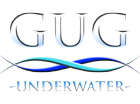Description
LOCATION: Turks & Caicos Islands (my former home!)
STORY: For years, I had been swimming by this one particular “cleaning station” where a swarm of Pedderson’s Cleaning Shrimp (Ancylomenes pedersoni) would wave their long white antennae to advertise cleaning services to nearly any fish that would approach. I almost always dive armed with an ultra-wide fisheye lens, which would be impossible to get close enough to use without scaring the shrimp’s customers away, as I’d need to be an inch or two to capture a meaningful photo with a fisheye lens. So on countless days, I’d swim past the cleaning station, observe the shrimp picking off dead scales and parasites from an endless variety of fish, and just move on without taking a shot. Sometimes I’d even put my hand near the shrimp’s corkscrew anemone home, and they’d clean my hand, often wrestling with the black hairs between my knuckles. Eventually, after 7.5 years, it was time for me to return to the USA, and I made a list of shots that I knew I should nail before I left. For this cleaning station, I swapped my usual fisheye lens for a 105mm macro lens so I could keep a distance of about 15″ so as to not disturb the cleaning behavior, and plopped myself down in front of the cleaning station for about 4 hours over two dives. Eventually, this perfect, 8″ long Coney Grouper (Cephalopholis fulva) swims right up and stretches open it’s jaws to invite the Pedderson’s cleaning shrimp to begin their work on it’s outside teeth, it’s deeper pharyngeal teeth, and it’s gills. When the grouper was satisfied, it gave a few shimmy-shake body twitches to signal the shrimp to cease the dental work, and it swam off, clean and ready for date night. The whole encounter lasted perhaps 40 seconds.
Cleaning stations like this provide an essential service to many species of marine life. Other cleaners include gobies such as shark-nose gobies, cleaner wrasse, several species of butterflyfish, and Spanish hogfish. Knowing where these cleaning stations are set up is one of the most important elements of ocean wildlife photography, and wherever I shoot, I make it a point to seek them out and spend huge amounts of time learning about both sides of the mutualistic symbiosis (one species gets cleaned of parasites or dead skin/scales, and the other gets a meal). Manta rays map out cleaning stations in their migrations of thousands of miles. Sharks do the same. You can even see a green sea turtle being cleaned by yellow tangs who eat the algae off its shell in the photo, Spa Day.
FOR A FINE ART PRINT: It looks great by itself, but it looks great paired with a few other “in-your-face” style portraits from the Fish Faces Collection, such as Queen Triggerfish Attack, Cowfish Kiss, or Mellow Yellow. Dentistry starts at 16×24″ and is available up to 48″ tall. Order online here in standard sizes, or contact our awesome team for an interior design consultation on printing it in a custom size to fit your space down to the inch.


Reviews
There are no reviews yet.